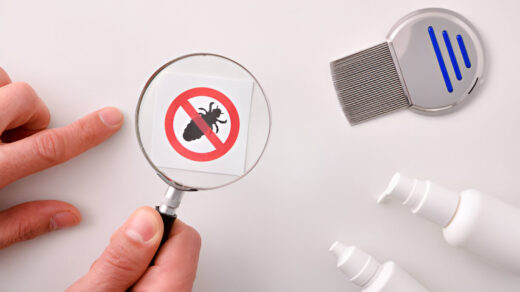The leg press machine is a popular choice for many gym-goers looking to build lower body strength. It allows users to lift heavy weights in a controlled environment, focusing primarily on the quadriceps, hamstrings, glutes, and calves. However, while the leg press offers great benefits, not everyone has access to this machine, and some individuals may find it uncomfortable or less effective than free-weight exercises. This is where leg press alternatives come into play. In this article, we’ll explore the best alternatives to the leg press machine, focusing on exercises that target the same muscle groups while promoting functional movement, balance, and flexibility.
Key Muscles Worked by the Leg Press

The leg press is a compound exercise that engages multiple muscles in the lower body. The primary muscles worked include:
- Quadriceps: The front thigh muscles responsible for extending the knee.
- Hamstrings: The back thigh muscles that work to bend the knee.
- Glutes: These muscles, primarily the gluteus maximus, help with hip extension and provide power during leg movements.
- Calves: The muscles on the back of the lower leg that are engaged during knee and ankle extension.
Understanding the muscles targeted by the leg press helps in selecting effective alternatives that provide similar benefits for strength and hypertrophy (muscle growth).
Why You Might Need a Leg Press Alternative
There are several reasons you might seek an alternative to the leg press machine:
- Lack of Access: Many home gyms and smaller fitness centers do not have a leg press machine.
- Mobility or Flexibility Issues: Some individuals find the fixed path of the leg press machine restrictive, especially if they have limited ankle or hip mobility.
- Variety in Workouts: Including a variety of exercises can prevent plateaus, increase overall functional strength, and reduce the risk of overuse injuries.
Fortunately, there are several exercises that can replicate or even enhance the benefits of the leg press without requiring the machine.
Top Leg Press Alternatives
1. Squats (Bodyweight, Dumbbell, or Barbell)

Squats are often considered the king of all lower body exercises and are one of the best alternatives to the leg press. Squats primarily target the quadriceps but also engage the hamstrings, glutes, calves, and core. There are various forms of squats to consider, depending on your fitness level and available equipment:
- Bodyweight Squats: Great for beginners and can be done anywhere without equipment.
- Dumbbell Squats: Holding dumbbells at your sides adds resistance, making the exercise more challenging.
- Barbell Squats: This version allows for heavier loads, making it ideal for those looking to increase muscle mass and strength.
Proper form is crucial with squats. Ensure your feet are shoulder-width apart, your chest is upright, and your knees do not cave inward during the movement.
2. Lunges (Static, Walking, or Reverse)
Lunges are another fantastic lower body exercise that effectively targets the quadriceps, glutes, and hamstrings. They are especially beneficial for improving balance and coordination. Lunges can be performed in various ways:
- Static Lunges: You remain in one place while lowering and raising your body by bending both knees.
- Walking Lunges: You step forward with each lunge, alternating legs, which increases the intensity.
- Reverse Lunges: Stepping backward into a lunge instead of forward, which may be easier on the knees.
Lunges allow for unilateral training, meaning they help correct strength imbalances between the legs.
3. Bulgarian Split Squat

The Bulgarian split squat is a single-leg exercise that challenges balance and coordination while focusing intensely on the quadriceps and glutes. To perform this exercise, place one foot on an elevated surface behind you and bend your front knee to lower into a squat position. This movement is similar to a lunge but places even more emphasis on the quads.
For added resistance, hold dumbbells at your sides or a barbell across your back. Bulgarian split squats are excellent for building lower body strength and improving stability.
4. Step-Ups
Step-ups are a functional exercise that works the quadriceps, hamstrings, and glutes. You’ll need a sturdy platform or bench for this movement. To perform step-ups, simply step one foot onto the platform, press through your heel, and drive your body upward until your other foot joins the first. Then step down and repeat on the other leg.
This exercise mimics many daily movements, making it a great addition to any lower body routine. You can add dumbbells for increased difficulty, making it an excellent alternative to the leg press.
5. Goblet Squats

Goblet squats are an accessible and effective leg press alternative, especially for those without access to heavy weights. For this exercise, hold a dumbbell or kettlebell close to your chest with both hands and perform a squat. The weight distribution helps you maintain an upright posture, which can be beneficial for those struggling with form in other squat variations.
This exercise targets the quads, glutes, and core while also helping with mobility and balance.
6. Leg Press Using Resistance Bands
If you don’t have access to a leg press machine, resistance bands can simulate the same movement. Simply lie on your back with your feet pressing into a resistance band that is anchored behind you. As you extend your legs, the resistance band provides tension similar to the leg press machine.
This option is not only convenient for home workouts but also helps improve mobility and control, making it a safer choice for individuals recovering from injuries.
How to Choose the Right Alternative for You
The best leg press alternative for you will depend on several factors:
- Your Fitness Goals: If your primary goal is strength, barbell squats or Bulgarian split squats may be the best options. If you’re focused on hypertrophy, higher rep step-ups or goblet squats might be more beneficial.
- Equipment Availability: Some of the exercises listed require minimal equipment, while others need dumbbells or barbells. Choose alternatives based on what’s available in your home or gym.
- Injury History or Limitations: If you have any injuries or mobility restrictions, lower-impact exercises like bodyweight squats or banded leg presses can provide a safer option.
Sample Workout Plan Using Leg Press Alternatives
Here’s an example workout that incorporates several leg press alternatives:
- Barbell Squats: Perform 3 sets of 8–10 reps. This foundational exercise targets the quadriceps, hamstrings, and glutes, promoting overall leg strength and stability.
- Walking Lunges: Complete 3 sets of 12–15 reps per leg. Walking lunges engage the quads, glutes, and hamstrings while improving balance and coordination.
- Bulgarian Split Squats: Execute 3 sets of 8–10 reps for each leg. This single-leg exercise intensely targets the quads and glutes while improving core stability.
- Step-Ups: Perform 3 sets of 10–12 reps per leg. Step-ups are great for unilateral leg strength, hitting the quads, glutes, and hamstrings.
- Leg Press with Resistance Bands: Finish with 3 sets of 15–20 reps. This exercise mimics the leg press, focusing on the same muscles while offering versatility for home workouts.
This routine targets all major lower body muscles and provides a balanced workout that mirrors the benefits of the leg press machine.
Conclusion
While the leg press machine is an excellent tool for building lower body strength, a variety of exercises can serve as effective alternatives. Squats, lunges, step-ups, and other exercises not only target the same muscle groups but also promote functional movement, balance, and overall athleticism. Whether you’re working out at home or in the gym, these alternatives offer versatile options to keep your leg workouts challenging and effective. Mix them into your routine to ensure balanced development and continued progress.


